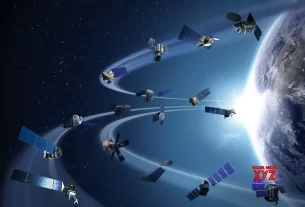
The Impact of 5G on Internet Connectivity
5G technology promises to revolutionize many industries with its fast speeds and low latency; some estimates even project its impact to expand global economies by trillions.
Speed allows you to stream 4K video and use virtual reality on your smartphone, but its benefits extend much further than that.
Faster Speeds
With 5G, you will experience significantly faster download speeds. Your exact experience may depend on factors like frequency bands used by your network, device capabilities and congestion in the network.
5G mobile technology differs significantly from its predecessors in its ability to handle higher data rates due to new spectrum bands and technologies like Massive MIMO. These features increase capacity by enabling multiple transmitting and receiving antennas to communicate simultaneously and thus boost data rates.
Technology will reduce latency that otherwise slows down internet connections and interfere with applications, which allows your organization to operate more efficiently and ensure business productivity. Remote teams can collaborate in real time using virtual and augmented reality tools enabling real time project collaboration on real projects; improving customer experiences while driving innovation and driving business growth forward as well as providing increased security while supporting efficient supply chain management.
Greater Capacity
5G promises massive connectivity with peak data rates of 20 Gbps – this enables faster uploads and downloads, uninterrupted streaming videos without buffering, as well as other consumer applications.
But this network goes beyond speed; it also has the capacity to connect billions of devices. Furthermore, its bandwidth, latency and spectrum efficiency surpass previous networks.
Businesses benefit when their network can support IoT devices that collect and process information real-time, making operations more efficient. Furthermore, AI applications requiring fast connections to handle large volumes of data quickly and reliably may also use this network as part of their infrastructure.
However, 5G will put strain on telcos’ resources and revenue streams. A key challenge will be recruiting and training sufficient personnel for operating this new technology – engineers, technicians, installers, equipment operators etc – which means its benefits may not reach as widely. Without adequate talent in place this could slow down overall rollout of the network.
Reduced Latency
Latency can be one of the biggest obstacles limiting network performance. It refers to the time it takes data from your device to the network and back again; this delay renders video conferencing unusable and prevents work being completed remotely.
5G opens the door for new services that rely on near instantaneous response times, from multiplayer mobile gaming to factory robot communications and self-driving cars. Thanks to low latency (typically less than 1.5 milliseconds), these devices will transmit information quickly and respond instantly – perfect for multiplayer mobile gaming or self-driving cars!
5G makes this possible through increased connection speeds and wider bandwidth, along with improvements in how data is created, encoded and transmitted – made even more efficient thanks to millimeter waves – bands of spectrum not previously utilized by businesses. Together these improvements give your business the edge it needs to remain competitive and innovate successfully.
Seamless Integration
5G technology will enable businesses to easily adopt and utilize advanced technologies, improving operational efficiencies, product and service innovations and strengthening data protection measures – driving increased market competitiveness and growth in turn.
5G offers high speed and low latency capabilities that allow remote operations to communicate directly in real time, facilitating instantaneous action that improve productivity while decreasing costly errors on the field.
Improved connectivity provided by 5G will enable employees to work from any location with reliable internet access – creating a flexible working environment and helping attract and retain top talent.
5G technology also features an expansive scalable nature that allows devices to connect without interference even when networks are busy, thanks to its ability to prioritize various forms of traffic – for instance, emergency transmissions between surgeons and robots in hospitals will receive priority over communication used by patients in that room.








